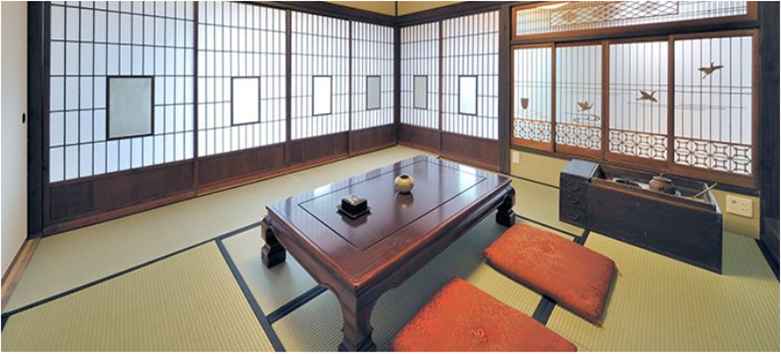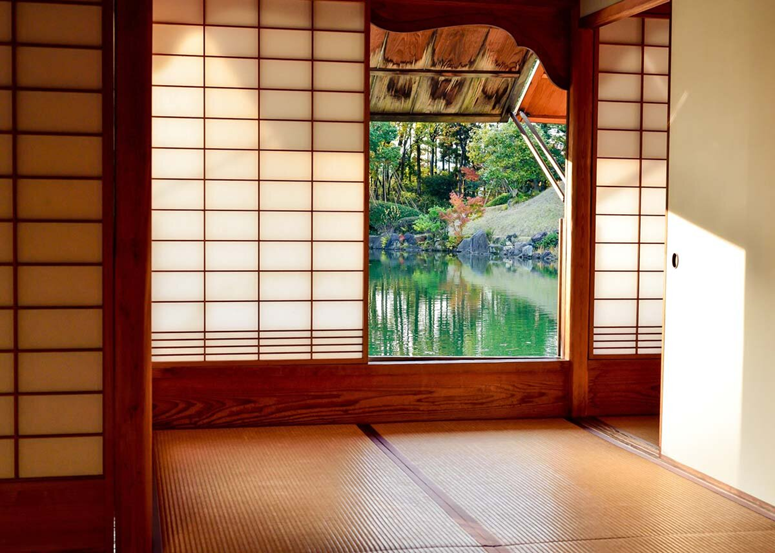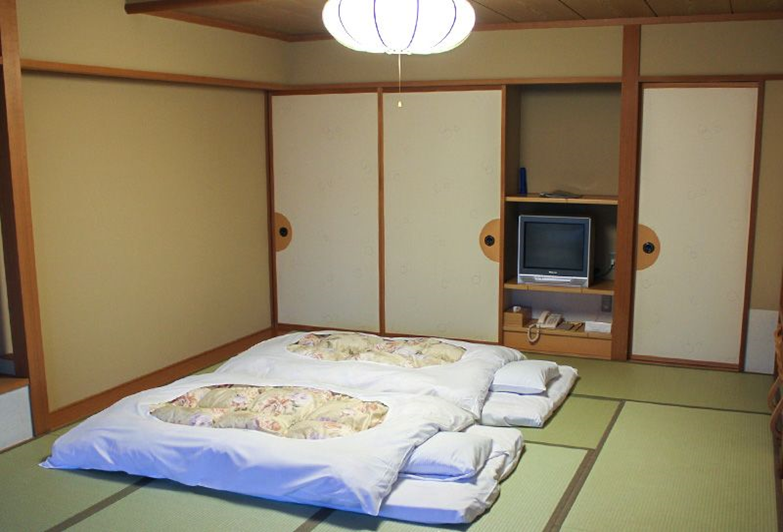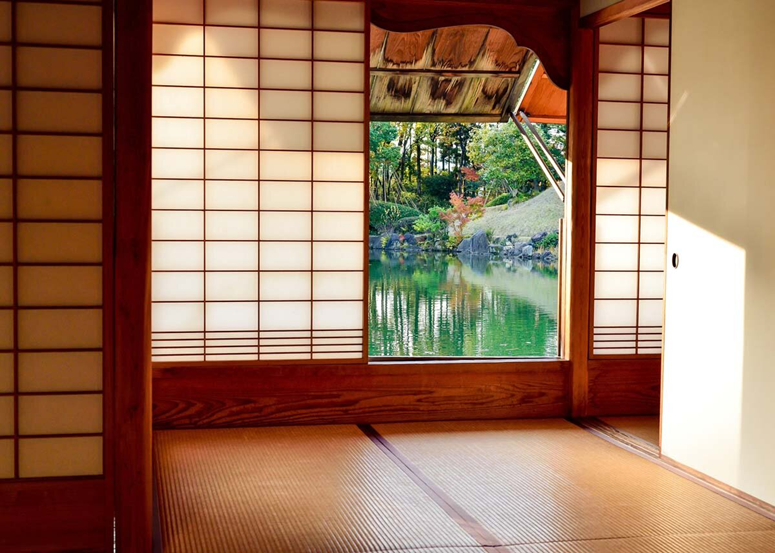“Tatami”.. Learn about the traditional Japanese mat and its features

“Tatami” flooring is a traditional type of flooring used in Japanese homes and buildings, and it constitutes an essential feature in tea rooms. It is also worth noting that interesting judo matches only take place on “tatami” mats. Although laminate flooring is more popular today, many still appreciate the look and feel of tatami flooring.
Tatami mats are the flooring used in traditional Japanese architecture, dating back to the Heian period (795-1185). They are made from rice straw and compressed wood, or finally from synthetic materials. It is durable, fire resistant and provides excellent insulation. It also creates a great impression when you walk on it.
Tatami mats were considered a luxury item for Japanese aristocrats, and since then they have become a symbol of Japanese aesthetics. Most homes in Japan have at least one tatami room. They are so common in Japanese homes that they are the de facto means of measuring the size of rooms. For example, information for an apartment for rent might say that the living room is “large enough to hold six tatami mats.”

Tatami structure
“Tatami” flooring is a traditional type of flooring used in Japanese homes and buildings, and it constitutes an essential feature in tea rooms. It is also worth noting that interesting judo matches only take place on “tatami” mats. Although laminate flooring is becoming more popular today, many still appreciate the look and feel of tatami flooring, and have found many ways to incorporate it into more modern interior designs.
Tatami are used in Japanese-style rooms, and they are also used in tea rooms for preparing and serving green tea ( sado ). Its standard dimensions are 182 centimeters in length and 91 centimeters in width, and about 3 to 8 mats are usually laid out and used in one room. The tatami is made by covering the bottom part of the tatami (tatami doku) with the top part of the tatami (tatami omote), and sewing the tatami hem (tatami hiri) along its edges.
Japanese homes are traditionally designed so that the size of each room can be determined by the number of tatami mats that can fit in it. For this reason, many people still refer to room sizes based on the tatami mats they contain. For example, if you tell a Japanese person that there are six mats in a room, he or she will be able to automatically determine their approximate size.

Tatami doku is in the form of a sheet about five centimeters thick. It is made by placing rice straw on top of each other and then stitching and pulling it. Due to the decline in the supply of rice straw in recent years, and the ease with which moths and mold grow, polystyrene boards or soft fiber boards are often used.
A belt-shaped fabric called “tatami-hiri” is sewn into the edges. This fabric is made from hemp or silk, and it is possible to choose different colors and shapes. There are types of tatami that do not have a Hiri Kryukyu tatami (a square-shaped tatami mat with an area half the area of a regular tatami) and others.
Tatami size
The tatami has a length-to-width ratio of 2 to 1 and is rectangular in shape, but there are square-shaped tatami. The size of the tatami varies slightly depending on the region, such as in Kyoto, Osaka, Nagoya, Tokyo, etc., but a slightly smaller size is often used in current apartments. The area of rooms in Japanese homes is often indicated by the number of tatami mats. Japanese-style rooms are usually 3 air rooms (tatami counting unit, which is 3 tatami mats), 4.5 air, 6 air, or 8 air.
History of tatami
Many elements of Japanese civilization moved from China, but tatami is considered a purely Japanese product. The oldest tatami still in existence to this day dates back to the middle of the eighth century AD, and is preserved in the Shoso-in treasure treasury of Todaiji Temple located in the city of Nara .

In the Heian era (794-1185), tatami were used on the floor of palace rooms of aristocratic families. It was placed on top of wooden boards according to need, and was used in the same way as pillows and beds. It spread from the end of the twelfth century until the middle of the sixteenth century AD, and the floor of the rooms became completely furnished with tatami, as is the case at the present time. It began to be used by the common people in the middle of the Edo era (1603-1868) and spread to all rural areas after the Meiji era (1868-1912).
Tatami at the moment
After World War II, Japanese life was greatly influenced by the West, but the era of Japanese homes with the tatami-furnished washitsu room as its core continued for a long time. Since 1990, the number of homes without a washitsu room has increased, and the popularity of wooden flooring has begun to spread.
According to the Kumamoto Prefectural Production and Sales Promotion Association, which is considered the number one prefecture in the production of basil in all of Japan, the amount of demand for tatami omoti fell by a third from 45 million mats in 1993, to 14.9 million mats in 2012.

When sleeping, the futon is stretched over the tatami. When the futon is not in use, it is folded and placed in a closet called “oshi-iri” that is installed in the wall of the room.
Wooden flooring has become increasingly popular in Japan today, and the number of rooms using tatami flooring has decreased. However, the properties of tatami mats are still desired by people who like to sit and sleep directly on the floor, which has led to the emergence of new and different types of tatami that are better suited to modern homes.
Today, tatami mats are made of synthetic fibers and are a very practical option, as they are easy to clean and less likely to attract dust mites or mold. There are also vibrantly colored tatami mats that can be used to add interesting touches to interior designs.

In the past, tatami mats often covered the entire floor of a room, but today manufacturers are offering new and innovative types of tatami mats that can be placed over wooden floors, allowing them to be used in just one corner or section of the room for a Simple and elegant appearance.
Another interesting feature of tatami mats that has been cleverly used to great artistic effect is that they change color depending on the angle of view, due to how they reflect light. Some designs use this feature to give the illusion of using multiple different colors, when in reality each mat is exactly the same color. Differences in weave affect the reflection of light and create shadow effects that appear to reverse depending on the angle of view, giving the impression that the colors are always changing.
Source : websites

